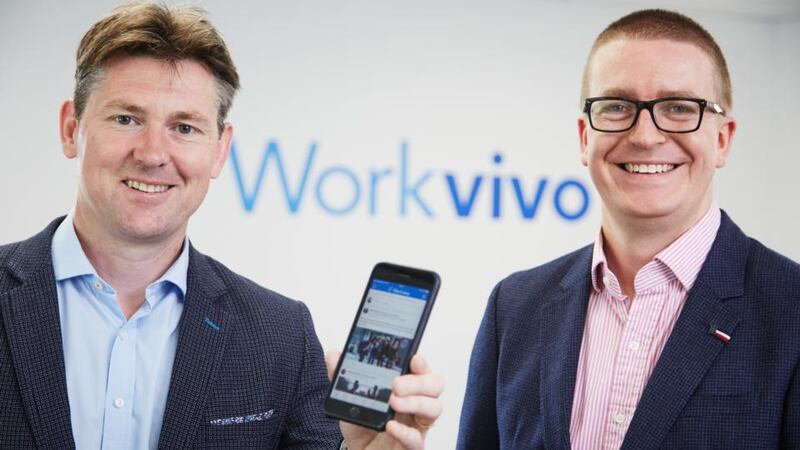In 2017, John Goulding and Joe Lennon founded employee engagement and internal communications company WorkVivo, having seen first-hand the problems poorly engaged employees created for organisations. "I was the CEO and Joe was the CTO of a successful HR software company with sales growth of 25 per cent a year," he recalls. "As we grew, we were bringing in great people but we were also losing some. The challenge for me was how not to lose those people. Employee engagement was the solution."
The duo spent the next year designing the company’s platform: a new employee engagement platform which would overcome many of the difficulties faced by companies wanting to connect with their staff.
“We decided to design something we could use ourselves,” says Goulding. “Having been in the HR software business for 10 years I could see what was happening in the market. We know that if you get employee engagement right good things happen. You get improved productivity, customer experience and employee retention. Research by Gallup and Gartner all points to improved performance by highly engaged organisations. They have 37 per cent less absenteeism, 65 per cent lower employee turnover, and 30 per cent greater customer satisfaction.”
People are much more likely to be engaged if they are informed. For example, if a team is working on a project, they should know the challenges which it is aimed at solving
[ visit talentsummit.ieOpens in new window ]
Staff turnover is particularly important in today’s increasingly competitive labour market. “Organisations don’t want a high turnover. It’s very hard to get the right talent and the challenge is to hold onto it. One of the best ways to do that is through employee engagement. We know that if you do it properly you get positive results.”
The question now is how to do it properly; what exactly are the key things that make a difference?
According to Goulding, the first, and greatest, issue is making the connection between employees and the organisation, as well as with the organisation’s goals. The latter is where companies falter , says Goulding . “It’s very easy to connect the leadership team with the goals but the average employee tends not to know about or connect with them.”
Recognition is the second issue facing employers. “Lack of recognition from both peers and management is one of the reasons people become disengaged,” says Goulding.

The third issue is that of measurement . “If organisations are serious about getting employee engagement right, they have to measure it,” Goulding contends.
And finally, there is communication. “People are much more likely to be engaged if they are informed. For example, if a team is working on a project, they should know the challenges which it is aimed at solving.”
The WorkVivo solution addresses each of these issues. “It is designed around those four pillars”, Goulding explains. “It’s an internal communications solution that looks and feels like a social media platform. People can post updates, likes, share information, promote events, post to groups of people in local offices or the entire organisation. It’s very interactive and user-friendly. Companies use it for internal communications. But it’s not just one way. Employees can engage with it and connect with it. And it’s not communication for the sake of communication, it’s specifically designed to make a difference to employee engagement.”
If a sports team is clear on what they are trying to achieve success is much more likely. It's the same with an organisation
The shift in focus to employee has been coming for some time, he points out. “The focus of the conversations around talent management has been on different areas and the performance review was at the epicentre. People started to realise that the performance review had failed. Managers didn’t like doing it, employees didn’t like it. It just didn’t work in many ways. Employers were enforcing bell curves to ensure too many people weren’t scoring too well. Lots of organisations have been abandoning it. Employee engagement was always part of the landscape; now it is becoming the focus of the organisation.”
Using a sporting analogy, he explains the need to define goals and recognise people for their contributions. “If a hurling or football team doesn’t know what they are trying to achieve there will be problems. If everyone knows they will all turn up. It’s the same with an organisation. If there is a culture of recognition there and a connection with what they are trying to achieve they are more likely to succeed.”
He advises organisations wishing to improve employee engagement to invest the time in connecting with their employees. “They have to bring the goals alive,” he says. “It’s not just telling people about things once a month or quarter. They have to be updated constantly on progress and you have to join the dots with people’s roles in that progress. Quick and easy recognition is much more effective than a formal process. These are things organisations can do themselves. They can make progress on employee engagement independent of any software platform.”












